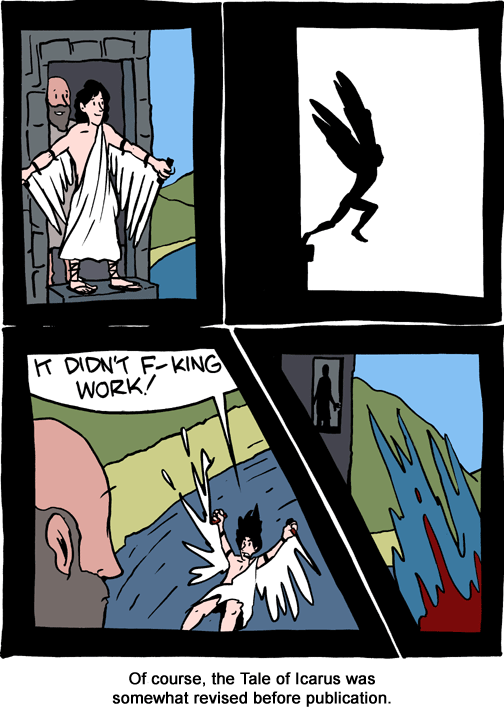Science
Related: About this forumProject Icarus: Laying the Plans for Interstellar Travel
We humans have known for a very long time that going to the stars will be difficult, if not impossible. The motto of NASA, Per Aspera Ad Astra, a latin phrase meaning "through hardship to the stars," comes down to us all the way from Seneca the Younger, a contemporary of Nero. Even today, when our metaphors of exertion and ambition are many --"swing for the fences," "go for gold" -- when we strain to capture the difficulty of a task, or the enormity of an achievement, "reach for the stars" is the first and most natural phrase that comes to mind. Our hierarchy of the ultimate human accomplishments is in this sense remarkably stable at the top.
And with good reason, because interstellar travel is in fact very difficult. With today's best propulsion technology, chemical rockets, it would take between 50 and a 100 millennia to reach Proxima Centauri, the nearest star to the Sun. The ideas we have about how to expedite such a journey are just that: ideas. They belong to the realm of speculation. Nonetheless, they are beginning to take on an empirical glow. To be sure, the bundle of technologies that could conceivably send a spacecraft to another star won't be here within the decade, or even within several, but neither are those technologies mere magical realism -- indeed, planning for their development has begun in earnest.
In September of last year DARPA, the Defense Advanced Research Projects Agency, convened a conference in Orlando, Florida, to discuss and promote one of its newest and most intriguing research projects: The 100 Year Starship Study. According to DARPA, the study is intended to "develop and mature a technology portfolio that will enable long-distance manned space flight a century from now." To that end, DARPA is now negotiating a grant of $500,000 to ex-astronaut Dorothy Jemison, whose personal foundation will team up with Project Icarus, a division of Icarus Interstellar, to seed the plans for an interstellar mission that could span several centuries.
Project Icarus, which will focus on the mission's technological challenges, is a theoretical engineering study that was launched in 2009 by the British Interplanetary Society with the purpose of designing an interstellar spacecraft. It brings together an international group of volunteer aerospace engineers from government space agencies, universities and the private sector with the purpose of generating technical reports on the engineering layout, functionality, physics, operation, and mission profile of an interstellar probe. You can think of it as a kind of repository for bleeding-edge thinking about interstellar travel.
Project Icarus takes its inspiration from Project Daedalus, a five-year study launched by the British Interplanetary Society in 1973 to determine whether interstellar travel was feasible at all. Project Daedalus ultimately concluded that interstellar was possible, but acknowledged that the technical challenges were significant. Icarus aims to pick up where Daedalus left off, by trying to chip away at some of those technical challenges. Andreas Tziolas, a former research fellow at NASA who holds a Ph.D. in Gravitation and Cosmology, is the Project Leader for Project Icarus. Yesterday I spoke to Tziolas about how and, more interestingly, why we might someday send a mission to the stars
The interview:http://www.theatlantic.com/technology/archive/2012/02/project-icarus-laying-the-plans-for-interstellar-travel/253335/#.T0aONSYAZFA.reddit
99th_Monkey
(19,326 posts)since in the myth, Icarus flies too close to the sun, so wax attaching his wings melt away and
he descends to his death, as I recall.
laconicsax
(14,860 posts)99th_Monkey
(19,326 posts)Motown_Johnny
(22,308 posts)this thing will be flying further from the sun than anything else. Icarus seems like the exact opposite. Maybe Suraci would be a better name.
Javaman
(62,533 posts)exboyfil
(17,865 posts)my Nuclear Engineering class in 1981. It seems what we have learned since then has made interstellar travel even more of a challenge. The biggest being that interstellar space is not empty - lots of planet sized and smaller objects out there to collide with a vehicle traveling near relativistic speeds. The bloom has also come off the Bussard ram jet concept. Finally I just don't think we are going to stand massive amounts of fusionable deuterium/tritium being used along with fission bombs to propel such a craft.
If such a craft is to be built it will be from fissionable material obtained from an asteroid if one can be located. Meteors seem to show that the concentration is very small. We are not going to launch massive amounts of fissionable material from the Earth - the risk is just too great in my opinion.
Ion drive/solar sail just does not seem practicable, but it probably would work for a slow boat approach. Beamed energy?? Again. Seeding the path would involve multiple generations. Round trip or one way? Different approaches for each.
Much more likely if it happens that our children (AI devices - robots) will do the exploring.
I frankly think we are probably the first or near the first technological species in our galaxy. You need a second or third generation star, and we have used a considerable amount of the time up on our star already getting to this point.
Ichingcarpenter
(36,988 posts)Which even NASA entertains as an idea.
Ideas Based On What We’d Like To Achieve
The following section has a brief description of some ideas that have been suggested over the years for interstellar travel, ideas based on the sciences that do exist today.
Worm Hole transportation
Alcubierre’s "Warp Drive"
Negative mass propulsion
Millis’s hypothetical "Space Drives"
NASA Goes on to explain each one at the link.
http://www.nasa.gov/centers/glenn/technology/warp/ideachev_prt.htm
Also Wikipedia on
Alcubierre’s "Warp Drive"
http://en.wikipedia.org/wiki/Alcubierre_drive
I think it was interesting that a half a million dollar grant is there from an X astronaut to look into this.
eppur_se_muova
(36,281 posts)"ex-astronaut Dorothy Jemison" is Mae Jemison, who runs the Dorothy Jemison Foundation for Excellence, named for her mother.

